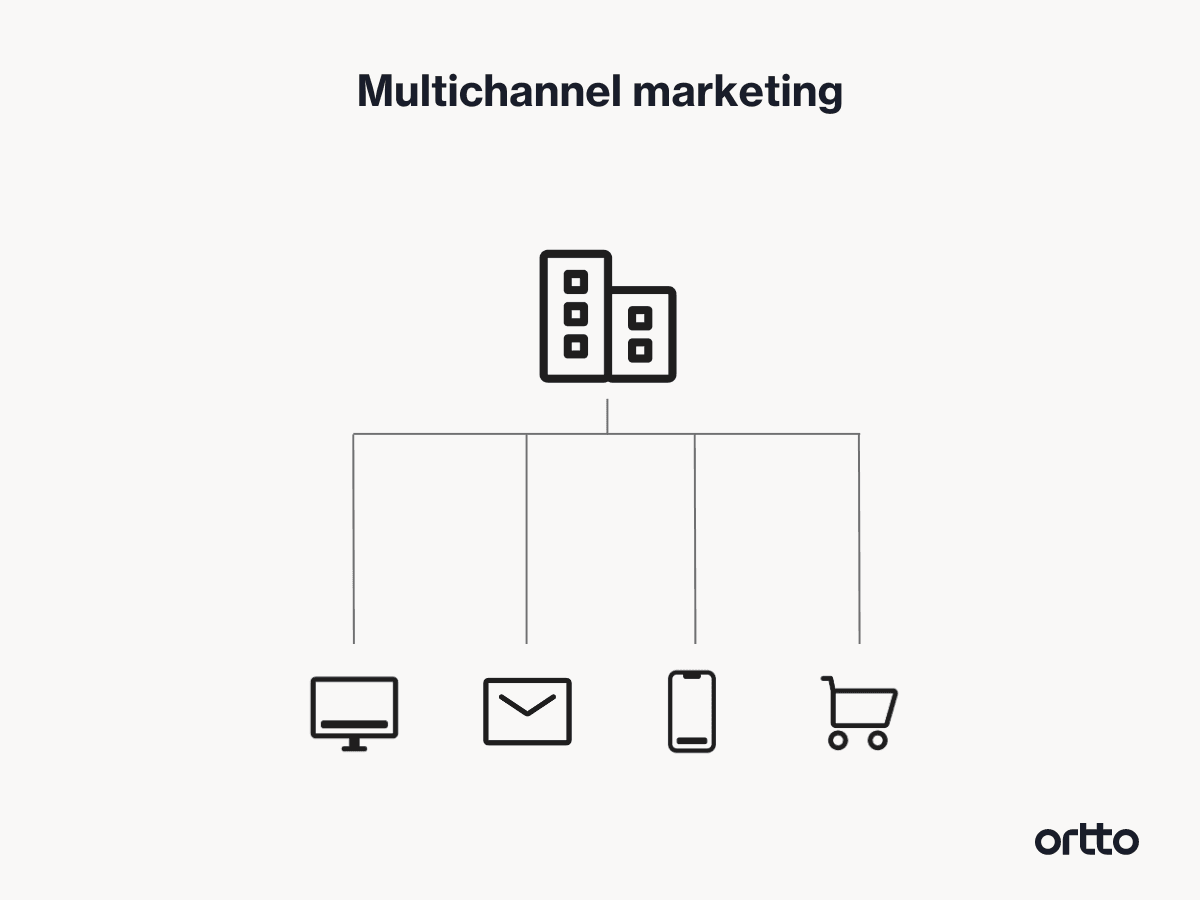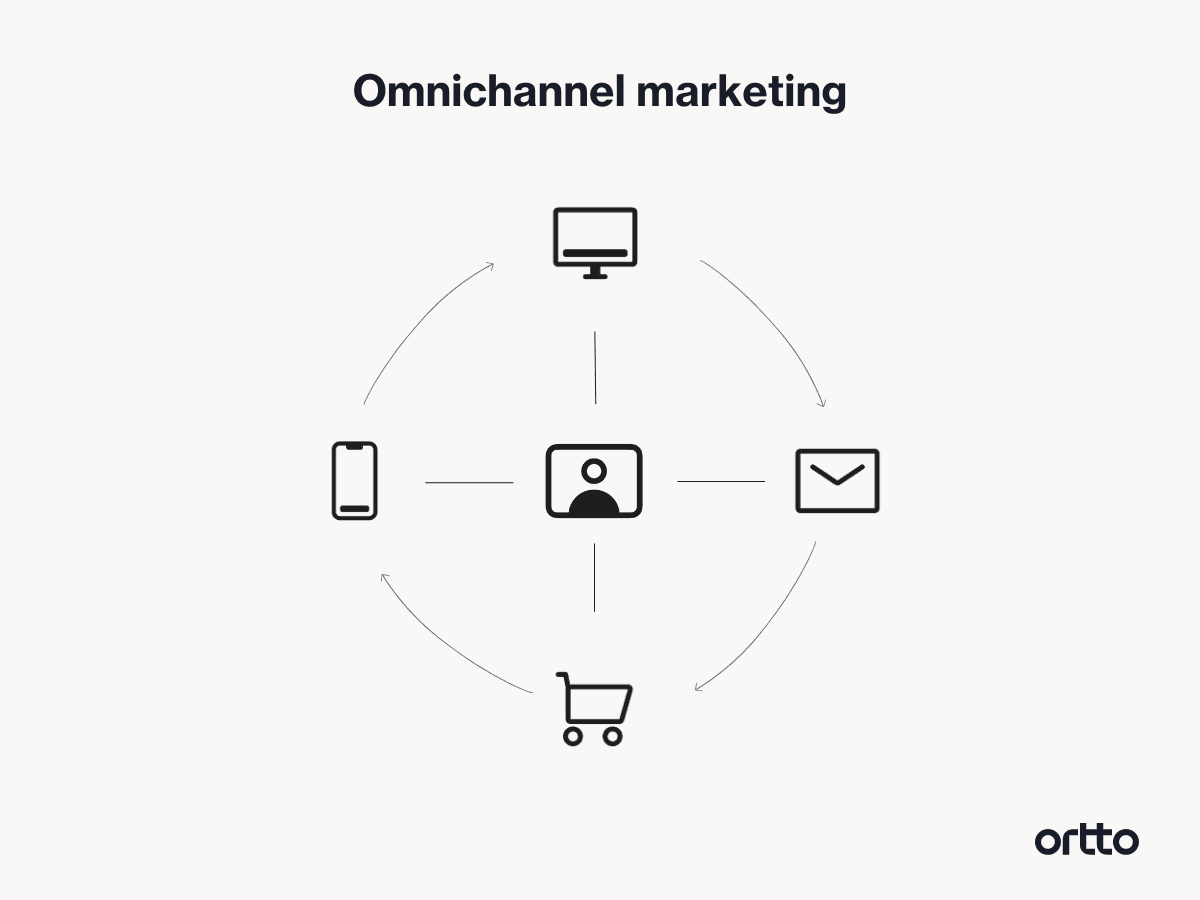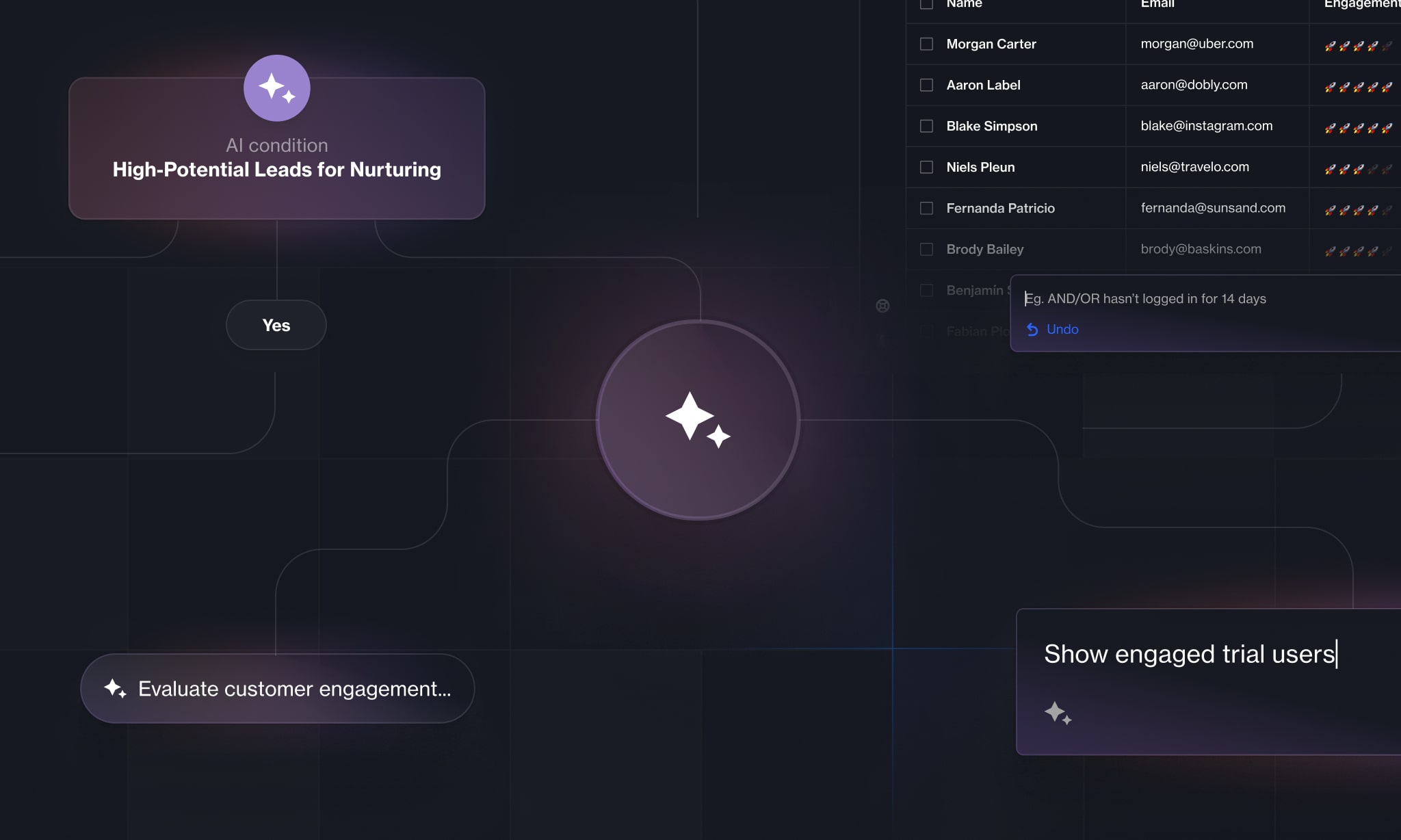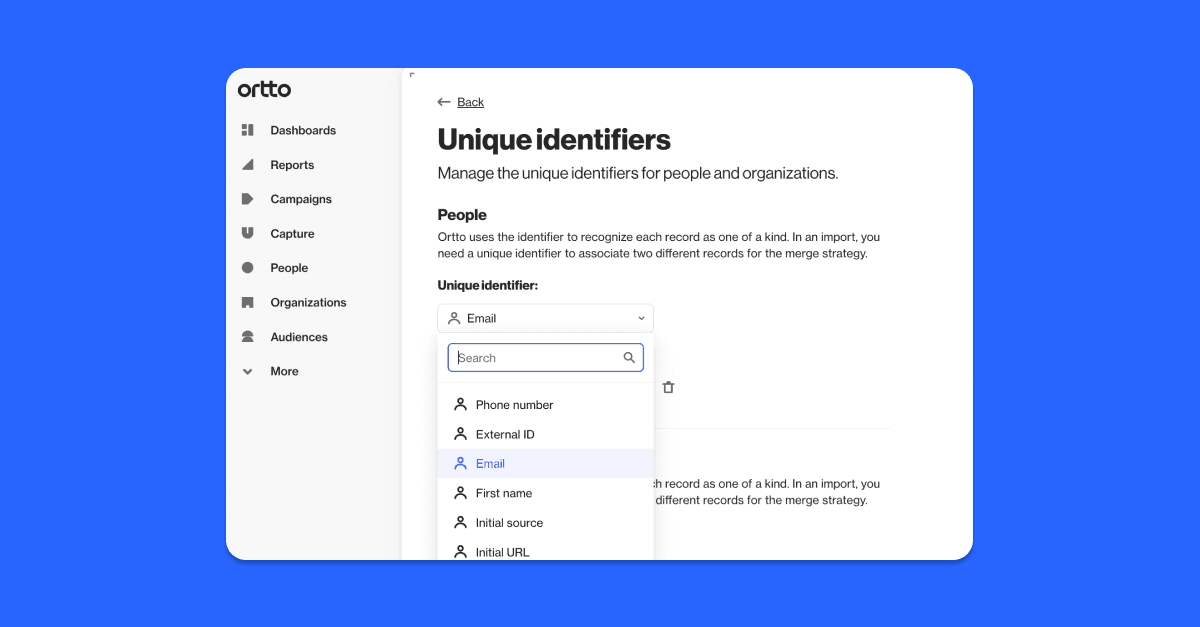Omnichannel and multichannel are often used interchangeably in the marketing world. And though they do share similarities, there are a few key differences that change the way your customer experiences your brand. Making an intentional decision around the strategy you choose can help you deliver better outcomes with your marketing.
In this article, we cover:
Omnichannel and multichannel marketing defined
Omnichannel and multichannel are both terms used to describe marketing strategies where multiple channels are used to communicate with leads and customers. Examples of channels include:
Website
Desktop
Mobile
Email
Social media (e.g. Facebook, Instagram, TikTok)
Instant messaging
Print and digital publications
Physical store
Retailers / marketplaces (e.g. Amazon)
Audio (e.g. podcast, radio)
Video (e.g. YouTube, TV)
What is multichannel marketing?
Multichannel marketing refers to a brand’s use of multiple online and offline channels to interact with customers and prospective customers. Multichannel marketing is considered ‘channel-centric’ because its goal is to get the brand’s message across to as many people as possible by casting a wide net.
In a multichannel strategy, each channel has an independent system and siloed data. For example, when a physical retail store is not aligned with the brand’s online ecommerce presence, a customer's online purchase would not be visible to the staff members in store.
What is omnichannel marketing?
An omnichannel approach sees multiple online and offline channels sharing processes and technologies and working synergistically. This approach aims to put the customer at the center, delivering a low-friction experience and creating a centralized and complete view of the customer journey.
In other words, in an omnichannel strategy, every action a customer takes in online and offline environments will be connected in a centralized database and marketing journeys will be built with all channels speaking to one another.
Omnichannel vs. multichannel marketing: Key differences
An omnichannel approach enables businesses to leverage multiple channels in an integrated, synergistic customer experience. A multichannel approach treats each channel as its own mini-universe.
The key difference here is that an omnichannel approach is primarily customer-centric, where a multichannel approach is primarily brand-centric.

With a multichannel approach to marketing, the focus is getting information to the customer in the hope of converting them. This means creating specific brand messaging for each channel, measuring the effectiveness of each channel, and adjusting the strategy accordingly. For example, your ad on LinkedIn might have completely different messaging and creative to your latest email promotion — and the results from each campaign will be measured independently at a channel level.
This approach does have its benefits — it tends to be much easier to track attribution and adjust your strategy. But it creates a fragmented, inconsistent customer experience that can frustrate customers and leads or damage brand awareness and perception.
Taking a step back, a multichannel experience doesn’t mirror our real-world experiences with brands today. As consumers, we think about our experiences with a brand as the sum of all the parts — from our online purchasing experience to the ads we’re served on social and the in-store communication with a salesperson.

An omnichannel marketing strategy unifies data to bring the end-to-end customer journey together and uses multiple channels to amplify connected campaigns and key messages. This doesn't always mean every channel is used for every campaign or message, but that marketing will select the most appropriate channels for the campaign or message, and then figure out how they can work together in one, cohesive journey.
This interconnected journey gives the customer a consistent experience across all touchpoints, making your brand and message more memorable and helping you to better understand the end-to-end customer journey.
While this customer-centric approach is undeniably a better fit for today's customer and tends to result in more business and brand growth in the long run, it can make attribution tricky for marketers working with multiple channels across one campaign. This challenge can be overcome with the right CDP, data hygiene practices, and attribution modeling — and it is worth the extra legwork to deliver better results for the business overall.
Summary: Benefits of an omnichannel marketing approach
With the key differences outlined above, it's clear an omnichannel approach should be the goal for most marketers operating today. Here are just a few of the benefits:
Consistency in brand experience
Customers expect their experience with a brand to be consistent across all channels. With an omnichannel strategy in place, customers will receive unified messaging and their interactions with your brand will be tracked in one place to ensure customer support teams both in real life and online are looking at the same information.
Personalized marketing journeys are improved
With omnichannel marketing, personalization can go beyond audience segmentation and standard merge tags like first name to include action-based triggers or split paths. This means you can use messaging to nudge leads or customers further down a desired path — with each action they take influencing the next message you send. It's a powerful way to personalize experiences, and one that most customers today are expecting.
Improve customer support
Customer support will benefit from an omnichannel experience because they will be able to go into conversations with full context. For example, if someone enters an online chat asking about a specific feature release they were notified about via email, the customer support agent will be able to look back at an activity record to see exactly which emails were received and opened. This fast-tracks answers to help improve customer retention, plus it makes support's job a lot less frustrating!
Richer customer data
Omnichannel enables brands to merge data from marketing, finance, support, sales, and product into a single customer profile to better understand their journey and behavior.
Data unification aids in audience segmentation, helps marketers better understand their ICP and the customer journey, unlocks richer customer and lead insights, and helps all teams better understand the health of the business as a whole.
The final word
With more online channels than ever before, and the collision of online and offline worlds. omnichannel marketing is quickly replacing multichannel.
Author

More by Ellie Wiseman
Ellie Wiseman has no more articles


